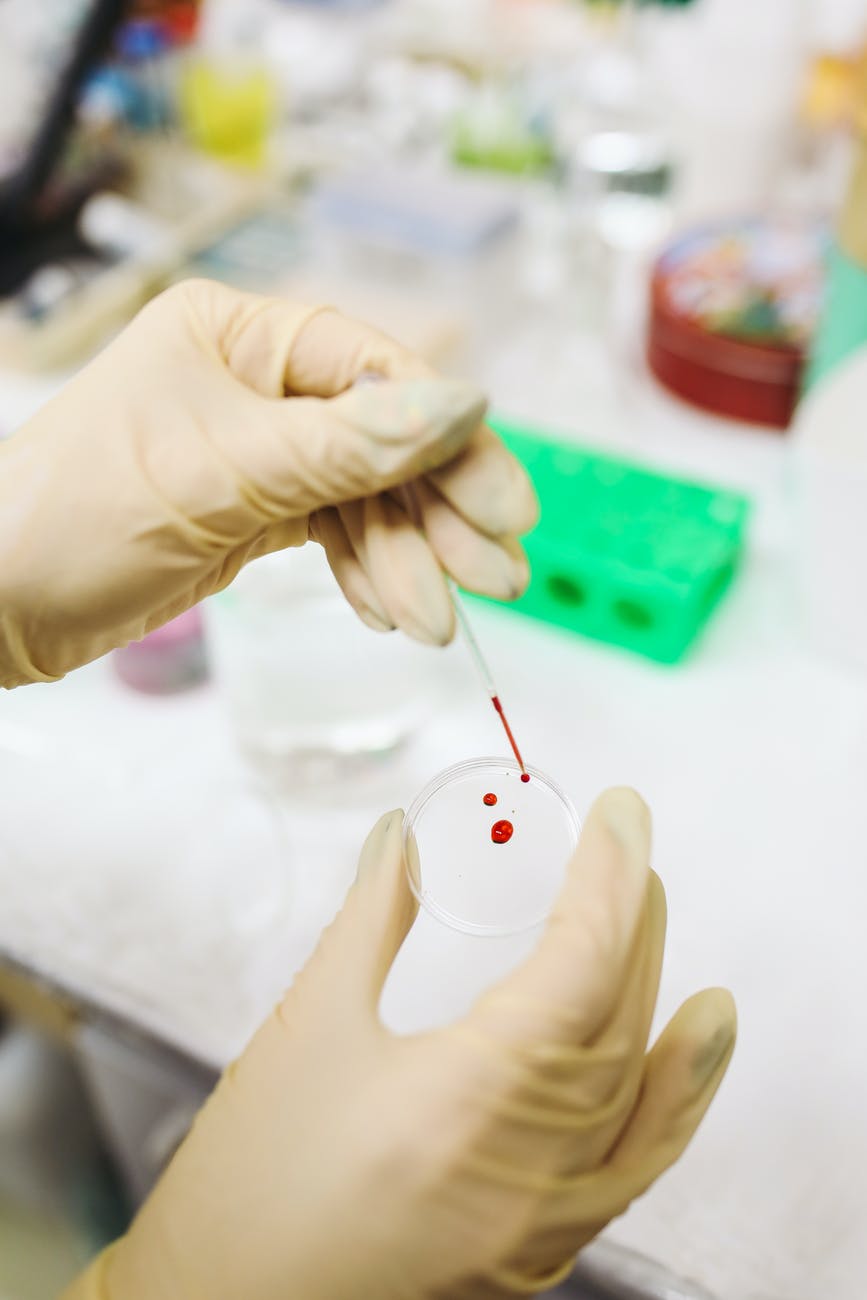Allergy types: Top 12 most common allergies in Singapore

An allergy (or allergic reaction) occurs when your body’s immune system is abnormally sensitive towards a substance that’s typically harmless in itself — inadvertently recognising it as harmful and reacting accordingly.
These external substances that provoke allergies are known as allergens. Common allergens include pollen, certain foods, dust mites, insect stings, medication and so on.
Allergies are more common in children, with some allergies going away as they grow older. On the other hand, people can develop allergies to substances they previously were not allergic to, and this may occur at any point in their life.

Any foreign substance is recognised by the body as an antigen — this includes both harmful and harmless substances. For someone with allergies, the allergen is detected by certain immune cells (antigen-presenting cells), which allow the body’s immune system to recognise their presence and provokes an immune response to it.
Allergic reactions occur when the immune system is unable to distinguish between a harmful and harmless antigen — which may result in a substantial reaction to a harmless substance.
Allergies typically occur past the first exposure — during the first exposure, the immune system develops antibodies against the allergen. On the next exposure, the immune system then produces large amounts of antibodies.
These antibodies are bound to mast cells, which are stimulated to release their histamines as the antibodies bind to the antigens. This release of histamines is what gives rise to the typical symptoms of allergies.
Since allergic reactions are the result of the body’s immune system response, allergies are typically more present in children as their immune systems generate a stronger response compared to adults.
Most allergic reactions are quite manageable — common symptoms include sneezing, itchy and watery eyes, coughing, skin rashes swelling and nausea. This might be an inconvenience to your daily life and you’ll have to be more careful around the allergens that trigger you, but these symptoms are generally mild and can be kept under control.
However, in some people allergic reactions can be much more severe. Some life-threatening symptoms include asthma attacks where the airways swell up to the extent that airflow is completely restricted, and/or anaphylaxis in which the blood vessels dilate till blood pressure drops suddenly and the person goes into anaphylactic shock.
These extreme reactions are most commonly caused by insect stings, some medications or exposure to peanuts and tree nuts.

Most allergic symptoms are mild and usually develop within a few minutes of exposure to an allergen (though they may occasionally develop over a few hours).
The specific symptoms you suffer may vary depending on how you come in contact with the allergen (eg. breathing in pollen, consuming milk or seafood)
Here are some common allergy symptoms to look out for:
ALSO READ: Move past conventional cleansers: You and your baby need special care
Very occasionally, an allergy may result in a more severe reaction known as anaphylaxis. This usually occurs within a few minutes of being exposed to the allergen. This is a life-threatening medical emergency that requires immediate treatment.
Signs of anaphylaxis include:
If you think you might be allergic to something but have yet to receive an official diagnosis, you can consider seeing an allergist (a doctor who specialises in diagnosing allergic diseases).
The doctor will first ask for your medical history, which will include your details of your symptoms and whether you have family members with a history of allergies or allergy-like symptoms.
You will also be asked about common places and situations where your allergies are usually triggered, in order to find clues on what you might be allergic to specifically.

Finally, allergy tests can be conducted for common allergies (such as the ones listed below). There are two types of allergy tests: skin prick tests and blood tests.
The skin prick test usually involves pricking the surface of an area of skin (on the back or inside of arms) with several different allergens at once. The doctor can then determine if you’re allergic to any particular substance via the presence of redness or swelling at the site of the prick.
If the results of this test are not clear, the doctor may conduct an intradermal test, which involves injecting the allergen under the first few layers of skin.
If you have skin conditions such as severe eczema, are on medications that may interfere with the skin prick test results, or are at risk of having a severe reaction to an allergen (anaphylaxis), then the doctor might conduct a blood test instead to diagnose allergies.
This involves drawing a blood sample and sending it to a lab that will look for antibodies of specific allergens, which will indicate what you may be allergic to. The results of this test may take a week or so.
Here are some clinics in Singapore where you can get tested for allergies.
There is currently no cure for allergies.
However, there are ways to manage and alleviate the symptoms of allergies. These include:
The best way to avoid the symptoms of an allergic reaction is to avoid the substance you are allergic to, when able.
This can involve avoiding specific foods that trigger allergic reactions, avoiding outdoor grassy areas during hay fever season, using dust-mite proof pillows and sheets, and so on.

These medications for mild symptoms can often be bought from pharmacies without a doctor’s prescription. Examples include antihistamines, decongestants, creams to reduce itchiness, and steroids to reduce inflammation.
Even though these medications don’t require a prescription, it is always best practice to consult your doctor before beginning any new medication.
If you are at risk of anaphylaxis, you might be prescribed a special injector such as an Epipen (which contains epinephrine) to use in the case of an emergency.
If someone develops symptoms of anaphylaxis, they will be able to inject themselves with this injector, which contains medication that relaxes the airways and reverses the symptoms of anaphylactic shock.
Though the most common recommendation is to avoid the allergy triggers altogether, this type of treatment instead gradually introduces allergens to one’s body in controlled doses, in order to train the body to tolerate these allergens. This can be done orally (if it’s a food allergy), or through injection therapy.
ALSO READ: How to identify and prevent food allergies in babies
Here’s a list of 12 common allergies in Singapore, along with how to best deal with them.
Food allergies are one of the broadest allergy groups that affect both children and adults. Most food allergic reactions are mild, but occasionally a more severe anaphylactic reaction may occur.
Shellfish allergies are the most common food allergy in Singapore.
There are two different types of shellfish that people may be allergic to: crustaceans (prawns, crabs, lobsters) and mollusks (clams, mussels, oysters, scallops, squid and octopus).
The former is more common than the latter, though a person may be allergic to both groups of shellfish. The best treatment for this type of allergy (as with most food allergies) is to avoid eating shellfish entirely.
Common symptoms of shellfish allergy include indigestion, swelling of the mouth and throat, trouble breathing, skin rashes, stomach pain and nausea.
Less common but more severe anaphylaxis symptoms may occur as well. If someone is suffering from serious respiratory symptoms or are exhibiting symptoms that affect two or more systems (eg. hives and difficulty breathing), seek emergency care immediately. If the person is carrying an Epipen, it should be administered immediately.

Though once rare, peanut allergies are becoming increasingly common in Singapore. Symptoms can range from mild to severe, with peanut allergies becoming a leading cause of anaphylactic shock in children.
Individuals with severe peanut or tree nut allergies can be extremely sensitive to exposure — children in particular. An incident in 2017 prompted Singapore Airlines to review serving peanuts as snacks after a toddler suffered a severe allergic reaction after being exposed to opened peanut packages from surrounding passengers.
However, recent guidelines released by the US health authorities have recommended feeding infants small doses of food containing peanuts as a way to desensitise them. Do consult your pediatrician before introducing this diet plan for high-risk infants.
Egg allergies are the most common food allergy in children under the age of three. Some children “grow out” of their allergy once they get older (this could be attributed to their immune system response weakening as they become adults), but some continue to suffer from egg allergies after they reach adulthood.
As with peanuts, symptoms can range from mild to severe. Eggs are the third-most common cause of food-triggered anaphylactic shock, behind shellfish and peanuts.

Wheat allergies occur when the body develops an immune response to the different proteins found in wheat. Wheat allergies can be more difficult to control since wheat is present in many foods (including ice cream, meatballs, soy sauce and other products that you might not initially suspect). Symptoms can range from mild to severe.
A wheat allergy should not be confused for celiac disease, which is a different kind of abnormal and severe immune system reaction to a specific protein in wheat called gluten.
Soy allergies occur when one develops an immune response to soy proteins, which are derived from soybeans. Foods that contain soy include tofu, soymilk, and soybean-based soups and sauces, though there are many foods that may contain traces of soy.
Mild signs and symptoms include hives or itching in and around the mouth, with rare cases of severe symptoms. Most children with soy allergies tend to outgrow them, though some persists till adulthood.
ALSO READ: Does your child have a peanut allergy? Here's how to check

Cow’s milk allergy shouldn’t be confused for lactose intolerance — lactose intolerance occurs when the body’s digestive system doesn’t produce enough lactase enzymes to break down lactose (milk sugar), while a milk allergy is an immune response to the protein found in milk.
This allergy is most commonly found in Singaporean infants, and is usually outgrown. Symptoms are usually mild, with rare cases of severe symptoms.
Allergic rhinitis is an allergic reaction to airborne allergens. The most common trigger for allergic rhinitis in Singapore is exposure to dust mites — extremely small bugs that live in house dust and feed on dead skins cells humans regularly shed. Allergic reactions are usually triggered when the waste products of dust mites are inhaled.
Common symptoms include sneezing, itchy eyes and throat, and a runny or congested nose. These symptoms are usually mild and can be treated with over-the-counter medications such as antihistamines and decongestants.
Asthma sufferers may experience additional, more severe symptoms such as difficulty breathing, wheezing and severe asthma attacks.
Since your bed makes an ideal breeding site for dust mites, using dust mite proof bed sheets and pillowcases as well as frequently washing your bedsheets are both effective ways to keep your bed dust mite-free.

Pollen is another trigger for allergic rhinitis. It’s a very common allergy that affects about 24 per cent of people in Singapore, and is more prevalent in children aged four to seven.
As with dust mite allergies, its symptoms are similar to that of the common cold, the common cold is caused by viruses, while hay fever is triggered by pollen.
People who suffer from hay fever may have a greater chance of also having other allergic conditions such as asthma and eczema. Treatment for hay fever includes taking oral antihistamines. More serious symptoms can be treated with nasal steroid sprays.
As much as we love pets, pet allergies are one very real downside of owning a furry friend.
Contrary to popular belief, pet allergies aren’t triggered by long, loose pet fur. Rather, pet allergies occur when the body’s immune system reacts to pet dander (tiny skin particles), which contains proteins that act as allergies. These proteins may also be found in saliva and urine.
If you find yourself experiencing symptoms of allergic rhinitis, asthma and rashes when you’re around furry pets, you may have a pet allergy.
If you already own a pet, some methods to prevent or alleviate your symptoms include bathing your pet regularly, keeping your pet out of the bedroom, and keeping your home well-ventilated.

A mould allergy is triggered when a person inhales tiny airborne mould spores. These mold spores can be found both outdoors and inside one’s home, with certain types of mould triggering allergic reactions in some individuals.
Common symptoms include persistent coughing, wheezing, a runny nose as well as itchy eyes and throat. Complications may occur in people who have asthma, as they may experience additional, more severe symptoms such as shortness of breath and asthma attacks triggered by mold.
Ways to combat mould allergies include keeping your home mould-free and well-ventilated. If there are parts of your home that are frequently exposed to excess moisture (bathrooms, kitchen, basement), clean these areas regularly to prevent the growth of household mould.
ALSO READ: Struggle with hives? Here are some treatment options
Getting stung by an insect sucks. Most people aren’t allergic to insect stings, but a small portion of the population end up presenting an allergic reaction after being stung.
The most common types of insect stings that result in allergic reactions are bees, wasps, hornets and fire ants. Normal reactions to insect stings include localised pain, redness and swelling only around the sting site, which may end up spreading to the surrounding area.
Allergic reactions to insect stings can range from mild to severe. Mild allergic symptoms look a lot like normal reactions with redness, swelling and itchiness to the affected area, while severe reactions can result in hives, severe swelling, a rapid pulse and anaphylactic shock.
Emergency medical treatment should be sought immediately if you suspect that you or someone else might be experiencing an allergic reaction to an insect sting.

Drug allergies are fairly common, and are triggered by certain prescribed or over-the-counter medications. Symptoms can range from mild to severe.
Some common drugs that trigger allergic reactions include:
Whenever you visit a new clinic, the GP will typically ask you if you’re allergic to any particular medication — it’s important to inform the GP and any medical professional you see of any existing allergies to prevent adverse reactions to prescriptions.
Do be cautious when purchasing over-the-counter medications, particularly if you have existing drug allergies.
In rare cases, individuals may experience a severe allergic reaction to vaccines. These reactions are often immediate, and occur within a few minutes to a few hours of receiving a vaccine.
This article was first published in Homage.